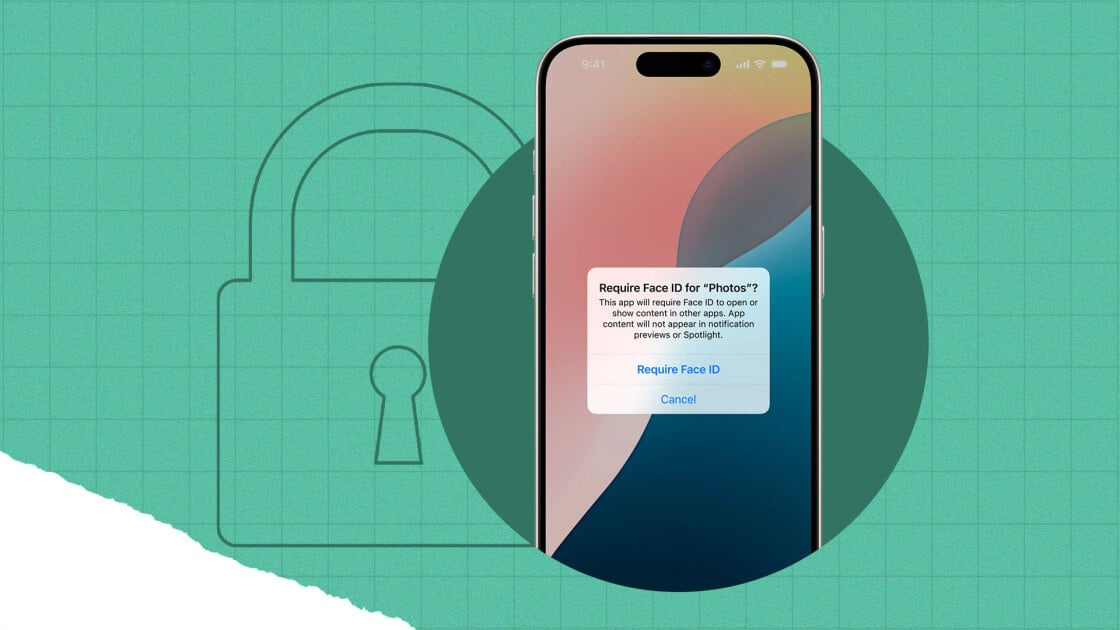
You likely already safeguard your iPhone with a passcode and Face ID or Touch ID. But perhaps you use certain apps that you’d like to protect even further. Maybe you store private information in the Journal app, don’t want anyone to gain access to data in the Health app, or have a few dating apps you’d like to keep away from prying eyes.With iOS 18, you can add an extra layer of security by locking or hiding specific apps. Locking an app keeps its icon on the Home screen but requires Face ID or Touch ID to unlock it. Hiding an app removes it from the Home screen and places it in a special Hidden folder in the App Library. You’ll then need to authenticate your identity to open that folder and access the app.You can’t lock or hide every app. For example, you can’t lock the Camera, Clock, or Watch apps, Apple Maps, or Settings. Otherwise, you can lock most built-in and third-party apps. Hiding an app is even trickier. You can’t hide most of the built-in apps, though you should be able to hide many third-party programs.To try it out, you need to be running iOS 18, which is available now as a public beta ahead of a formal launch next month.How to Lock an AppTo lock an app on your home screen, long-press on its icon. If the app can be locked, the resulting pop-up menu will show a Require Face ID command. Tap it, and you’ll see a message confirming that you want to require Face ID for the app you selected. The message also explains how the process works. Tap Require Face ID to confirm. Your face is scanned to confirm your identity, followed by a green checkmark for success.
(Credit: PCMag / Apple)
The next time you try to open that app, you’ll have to authenticate with Face ID or Touch ID. Once your identity has been confirmed, the app will open with full access available.
(Credit: PCMag / Apple)
If you ever want to remove the lock from an app, long-press on it and select Don’t Require Face ID from the pop-up menu. Your face is again scanned to confirm your identity, followed by a green checkmark to show that the lock has been removed.
Recommended by Our Editors
(Credit: PCMag / Apple)
How to Hide an AppTo hide an app from your home screen completely, long-press on its icon. If the app can be locked, the pop-up menu will show the Require Face ID command. Tap it, and if the app can be hidden, you’ll see a message with two choices: Require Face ID and Hide and Require Face ID. Tap the second option. The next screen explains how hiding an app works. To confirm your action, tap Hide App. The icon is then removed from the Home screen.
(Credit: PCMag / Apple)
You can find the hidden app by swiping all the way to the left of the Home screen to view the App Library. Move to the bottom of the library until you see a folder named Hidden. Tap that folder, and you’ll be authenticated with Face ID or Touch ID. Tap the app you want to access, and you’ll again be authenticated before the app opens.
(Credit: PCMag / Apple)
To unhide the app, tap the hidden folder in the App Library to reveal it. Long-press on the app’s icon and select the Add to Home Screen command. Confirm your action by tapping Unhide App. The app is moved back to the Home screen where it will now be visible and unlocked.
(Credit: PCMag / Apple)
How to combine photos on an iphone
Apple Fan?
Sign up for our Weekly Apple Brief for the latest news, reviews, tips, and more delivered right to your inbox.
This newsletter may contain advertising, deals, or affiliate links. Subscribing to a newsletter indicates your consent to our Terms of Use and Privacy Policy. You may unsubscribe from the newsletters at any time.
About Lance Whitney
Contributor
I’ve been working for PCMag since early 2016 writing tutorials, how-to pieces, and other articles on consumer technology. Beyond PCMag, I’ve written news stories and tutorials for a variety of other websites and publications, including CNET, ZDNet, TechRepublic, Macworld, PC World, Time, US News & World Report, and AARP Magazine. I spent seven years writing breaking news for CNET as one of the site’s East Coast reporters. I’ve also written two books for Wiley & Sons—Windows 8: Five Minutes at a Time and Teach Yourself Visually LinkedIn.
Read Lance’s full bio
Read the latest from Lance Whitney






